Ever been to one of the big
cities in the world? If yes, then the sight of high-rising buildings is
definitely not new to you. Be it in New York, Shanghai, Bangkok, Dubai, London,
Tokyo, Chicago, Paris and so on, the architectural/monumental excellence of high-risers
is ever present. You see them built in different sizes and shapes, and of
different heights and colours, but not without one thing in common:
magnificence.
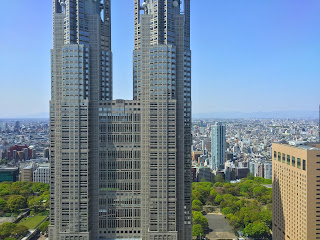 From ancient times, mankind
has sought to create for themselves monuments of beauty in construction of
buildings for whatever purpose be it for habitation or religious/ceremonial
purposes. The ancient Egyptians were able to build high rising structures known
as pyramids (with some standing well
above 460 feet) used mainly for the preservation of mummies. Other places where
the ancient world witnessed high rising constructions include ancient Babylon
where the Etemenanki is said to have
stood well above 290 feet, China where the Yongning
Temple once stood at 448 feet in the city of Louyang, Anuradhapura city in
Sli lanka, Korea, Columbia, Rome etc.
From ancient times, mankind
has sought to create for themselves monuments of beauty in construction of
buildings for whatever purpose be it for habitation or religious/ceremonial
purposes. The ancient Egyptians were able to build high rising structures known
as pyramids (with some standing well
above 460 feet) used mainly for the preservation of mummies. Other places where
the ancient world witnessed high rising constructions include ancient Babylon
where the Etemenanki is said to have
stood well above 290 feet, China where the Yongning
Temple once stood at 448 feet in the city of Louyang, Anuradhapura city in
Sli lanka, Korea, Columbia, Rome etc.
Unlike the Skyscrapers of the
modern world built through the power of modern technology, the architectural
feat of the ancient world in erecting such massive structures is still
considered a wonder today. But despite their height and magnificence, none of
those ancient structures can be passed as being a skyscraper. “Why?” one may
ask. Well, let us consider what as skyscraper is.
What
Is a Skyscraper?
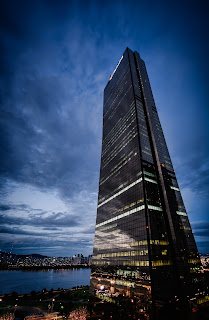 According to Wikipedia, the free encyclopedia, 2016,
a skyscraper is a tall, continuously habitable building having multiple floors.
It also states that when the term was originally used in the 1880s it described
a building of 10 to 20 floors, but now described one of at least 40-50 floors.
According to Wikipedia, the free encyclopedia, 2016,
a skyscraper is a tall, continuously habitable building having multiple floors.
It also states that when the term was originally used in the 1880s it described
a building of 10 to 20 floors, but now described one of at least 40-50 floors.
Dictionary.com provides two
definitions on the term skyscraper which are:
- A relatively tall building of many stories, especially one for office and commercial use
- Architecture: a building of exceptional height completely supported by a framework, as of girders, from which the walls are suspended, as opposed to a building supported by load-bearing walls.
Most modern skyscrapers are
very tall buildings as high as 50 metres (164 feet) characterised by large
surface areas of windows with steel framework that supports curtain walls. The
curtain walls according to Wikipedia,
either bear on the framework below or are suspended from the framework above,
rather than load-bearing walls of conventional construction.
Although tall and massive,
ancient structures like the pyramids of Egypt a not considered to be
skyscrapers because they were largely uninhabited and do not comply with the
modern definition of skyscraper.
Origin
of Skyscrapers
Many wonder when and where the
first skyscraper was built. According to early modern standards, the term
skyscraper was first attributed to any building of steel framed construction of
at least 10 stories. Based on this standard, he first steel-frame skyscraper
was the Home Insurance Building in
Chicago, Illinois in 1885. Originally 10
stories, the building stood at 138 feet (42 metres). Most early skyscrapers
appeared around Chicago and New York toward the end of the 19th
century ensuring a competition for the city with the tallest building in the
world. 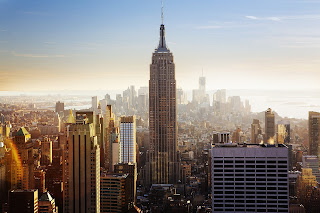

According to records, Rand McNally Building in Chicago own by
Burnham and Root was the first all-steel framed skyscraper and was finished in
1889. Before then, no building has attained the status of true skyscraper, but
with the completion of Louis Sullivan’s Wainwright Building in St. Louis,
Missouri, in 1891, the world witnessed the unveiling of what was considered by
many to be the first true skyscraper. The building according to Wikipedia was the first steel-framed with
soaring vertical bands to emphasize the height of the building
The way skyscrapers are built
have evolved in modern times with the construction of high-risers built with
steel or reinforced concrete frameworks with curtain walls of polished stone or
glass. Such gigantic buildings are equipped with such things like elevators and
water pumps built mechanically.
Since the end of World War II,
the world has witnessed a great deal of the construction of skyscrapers, each
with its uniqueness in size, colour and elegance. This period also abandoned
the classical designs pf the early skyscrapers, instead adopting the
international style f uniformity. This saw many older skyscrapers demolished or
redesigned to suit contemporary style and taste. One example of a demolished
skyscraper was the New York’s Singer
Building, once the wold’s tallest skyscraper.
Design
and Construction
Because of the complexity in
skyscraper design, balances are required between engineering, economics and
construction management of the building. Before designing and construction of a
skyscraper begins, there are certain factors to be considered so as to overcome
the problems posed by such complexity. This includes considering the topography
of the land on which the building it to be erected, estimating the cost and
planning a suitable budget for the building, creating a good design for the
project. Also, getting the right people for the job should be a top priority
for the planners. This involve getting a team of architects, constructors and
engineers suitable for the job.
Skyscrapers should be designed
and constructed in a unique and professional way so as to create safe and
habitable spaces in them. They must support their weight, be able to protect
occupants from fire outbreak, and be able to resist wind and earthquakes. This
involves constructing a suitable foundation and above the ground framework for
the building. Also, skyscrapers must be designed in a manner that makes them
conveniently accessible on all floors and provide utilities and suitable
climate for the occupants.
The
Burj Khalifa
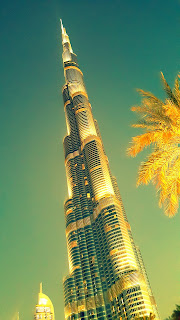 Standing well at 828 metres
tall with 163 floors above the ground and occupying 309,473 metre square, the
Burj Khalifa once known as Burj Dubai is the tallest man made structure in the
world. Completed 31 December, 2009,
after five years on exterior construction, the Y-shaped tower is made of Steel,
aluminium, glass and reinforced concrete and cost USD $1.5billion according to
Stanglin and Douglas’ “Dubai and world’s
tallest buildings.” It is located in the middle of a man-made lake and is serviced
by 57 elevators (2 double deck and 55 single deck) said to move passengers at a
speed of 36km/h making them one of the world’s fastest elevators. The building rising to the sky in steps is
said to symbolise rising toward heaven
in Islamic architecture. It has apartments, shops, spas, swimming pools and an
observation platform on the 124th floor.
Standing well at 828 metres
tall with 163 floors above the ground and occupying 309,473 metre square, the
Burj Khalifa once known as Burj Dubai is the tallest man made structure in the
world. Completed 31 December, 2009,
after five years on exterior construction, the Y-shaped tower is made of Steel,
aluminium, glass and reinforced concrete and cost USD $1.5billion according to
Stanglin and Douglas’ “Dubai and world’s
tallest buildings.” It is located in the middle of a man-made lake and is serviced
by 57 elevators (2 double deck and 55 single deck) said to move passengers at a
speed of 36km/h making them one of the world’s fastest elevators. The building rising to the sky in steps is
said to symbolise rising toward heaven
in Islamic architecture. It has apartments, shops, spas, swimming pools and an
observation platform on the 124th floor.
The building is considered an
architectural/monumental marvel, winning multiple awards over time.
Some of the world’s tallest
buildings to have once topped the list of tallest buildings include
- Taipei 101 located in Taiwan and standing at a height of 509 metres.
- Petronas Tower 1 and 2 (also Known as the Twin Towers), Kuala Lumpur, Malaysia standing at a height of 452 metres.
- Willis Tower (once known as Sears Tower), Chicago standing at 442 metres tall
- Empire State Building, New York city, at a height of 381 metres completed in the year 1931.
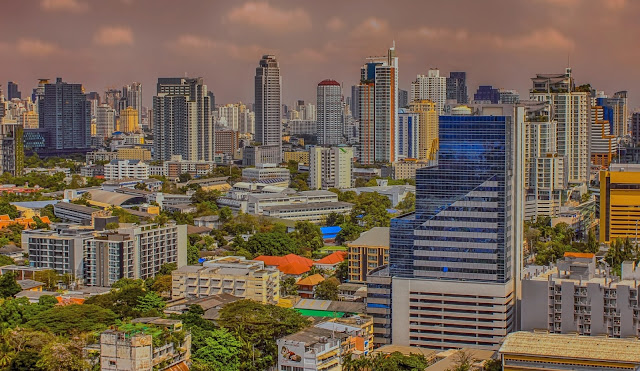
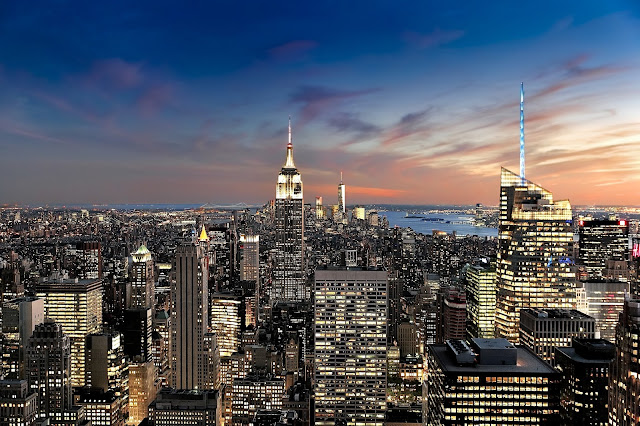




I have a brother who's been up the Burj Khalifa before. He joked that you could see the whole world from up there. And I might find it easy to believe him because of the height of that building. Nice post Mr Ejiofor.
ReplyDeleteThat was pretty funny James, but you are pardoned. Sometimes I wonder how man does these things. But, it's man we are talking about: the most intelligent beings on earth. Can't wait for Saudi Arabia to lunch the next big thing.
ReplyDeleteI love skyscrapers. Only those afraid of height would object.
ReplyDeleteI used to be afraid of height until the night after high school, my boyfriend took me up ten stories and gave me the first kiss of my life. No more acrophobia. Lol
DeleteAs long as we don't get to witness a 'San Andreas' kind of situation, skyscrapers are a wonder.
ReplyDeleteWhere I come from, we don't have skyscrapers. I've never seen one in the real world, but I'm fascinated with what I see in movies and papers etc. You have to pity my poor soul; I would love to see one someday.
ReplyDeleteOh poor you. I understand Mr Ejiofor. Some countries don't like erecting monster tall structures for some good reasons. Don't fell bad about it.
DeleteReading this post made my Night. Loving the experience on Pixabay. Thanks for the links Mr Ejiofor.
ReplyDeleteThanks Sandro
DeleteVery nice dear. I enjoyed reading this.
ReplyDeleteThanks Ogochukwu. Hope to hear more from you.
Delete